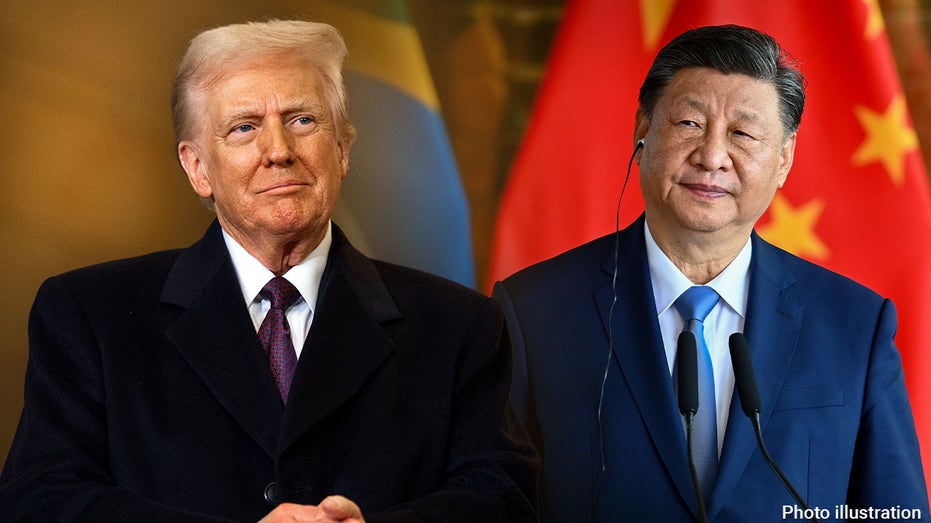In recent discussions regarding the ongoing economic tensions between the United States and China, author and analyst Gordon Chang has outlined the implications of tariffs imposed by former President Donald Trump. According to Chang, these tariffs have been implemented at a particularly challenging time for Chinese President Xi Jinping. The economic landscape in China appears precarious, and the timing of these tariffs magnifies the pressure on Xi’s administration.
Chang argues that Trump’s strategy was not only reactive but also meticulously timed to exacerbate existing vulnerabilities within the Chinese economy. The tariffs, initiated in 2018 during Trump’s presidency, targeted a wide array of imports from China, generating significant friction in U.S.-China relations. The motivations behind these tariffs were rooted in attempts to address what the Trump administration described as unfair trade practices, including intellectual property theft and trade imbalances. However, the repercussions of these economic measures reach far beyond trade deficits.
At the core of Chang’s analysis is the observation that Xi Jinping is currently navigating a complex set of challenges, both domestically and internationally. The Chinese economy, historically one of the fastest-growing in the world, has shown signs of slowing for several consecutive quarters. Factors including increased debt levels, a declining real estate market, and pandemic recovery efforts have contributed to an environment where economic growth is not only crucial but also precarious.
Among the most salient consequences of Trump’s tariffs on China is the adverse effect on various sectors of the Chinese economy. For instance, industries reliant on exports have faced heightened obstacles, resulting in diminishing revenues and reduced competitiveness in the global market. These tariffs have both increased costs for Chinese manufacturers and stymied their ability to penetrate or maintain market share in other countries. Consequently, this situation has led to job losses and increased public discontent within China.
Beyond the immediate economic challenges, Chang highlights the political ramifications of these tariffs. Xi’s leadership has been characterized by a strong emphasis on nationalism and a narrative of China as a global superpower. However, the economic struggles exacerbated by the U.S. tariffs undermine this narrative and challenge the legitimacy of Xi’s rule. As public sentiment sours over economic conditions, social stability, and political coherence may become increasingly difficult for Xi to maintain.
Further complicating matters for Xi is the broader international landscape. As the United States continues to assert its dominance and challenge China on multiple fronts, including technology, human rights, and military positioning, the stakes have escalated considerably. The tariffs serve as a tool not merely of economic pressure but also as a means of showcasing U.S. resolve in the face of perceived threats from China.
One of the crucial elements Chang emphasizes is that Trump’s tariffs coincide with a period when Xi was already under significant stress from several fronts, including the ongoing dynamics of the COVID-19 pandemic, international scrutiny regarding China’s handling of the virus, and geopolitical tensions in the South China Sea and with Taiwan. These tariffs add an additional layer of complexity for Xi, forcing him to recalibrate his economic strategies while contending with external pressures.
Moreover, the technology sector stands out as a focal point of contention influenced by Trump’s tariffs. Chang points out that as the U.S. restricts access to advanced technology for Chinese firms, it limits China’s ability to innovate and compete in a technology-driven global economy. This situation becomes particularly pressing as countries race to lead in emerging technologies such as artificial intelligence, quantum computing, and renewable energy. For Xi, fostering a self-sufficient and technologically advanced economy is essential but increasingly difficult amid external pressures.
In light of these dynamics, Chang advocates for a nuanced understanding of the implications of unilateral economic measures like tariffs. While they may be aimed at addressing defense concerns from a geopolitical standpoint, they also provoke retaliation that can escalate into broader economic conflicts. Chang warns that this tug-of-war could have unintended consequences not only for China but also for the global economy as a whole.
There remains a debate over the effectiveness of tariffs and whether they genuinely benefit the U.S. in the long run. Critics argue that these measures ultimately hurt American consumers through increased prices and strained supply chains. Thus, the economic impact of tariffs must be weighed against their potential political advantages, especially regarding Xi Jinping’s leadership and its implications for China’s international standing.
As the Biden administration navigates the complexities left in the wake of Trump’s economic policies, Chang suggests a recalibrated approach may be required. Addressing the root causes of competition with China while fostering collaborative solutions could yield more favorable outcomes for both nations. However, altering the course may demand significant political will and a shift in public perception of how China is viewed within the United States.
Ultimately, Chang’s insights reveal the intricate interplay of economic policy, political legitimacy, and international relations as these factors interact in real time. The ongoing struggle between the U.S. and China over trade, technology, and global dominance is complex and multifaceted, with tariffs representing merely one facet of a larger geopolitical game.
At a time when global interconnectedness is both a strength and a vulnerability, understanding the strategic implications of such economic measures is paramount. As Xi grapples with the effects of Trump’s tariffs, the long-term consequences for both nations—and indeed for the global economic landscape—remain to be fully realized. The narrative around these tariffs will undoubtedly evolve as economic conditions change and new leaders emerge on the international stage.
In conclusion, the intersection of Trump’s tariffs and Xi Jinping’s precarious position underscores the urgency of finding a constructive pathway forward in U.S.-China relations. With careful analysis, respect for economic interdependence, and a commitment to diplomacy, a more peaceful and mutually beneficial relationship might still be within reach, despite the ongoing challenges posed by tariffs and beyond.































